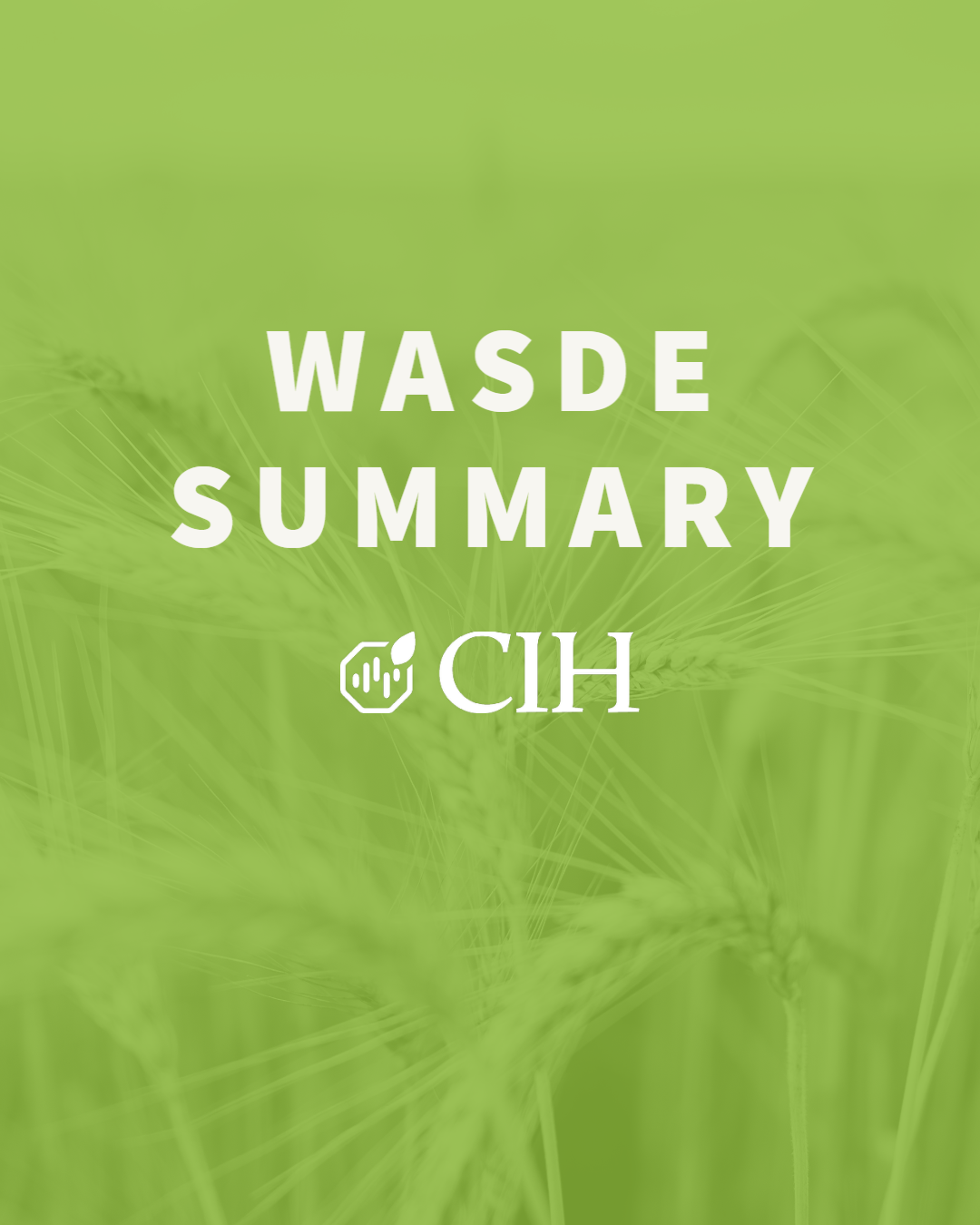
October 11, 2024
Today’s WASDE report maintained a view of ample supplies of corn, soybeans and wheat, and made minor adjustments toward production and demand categories for corn and soybeans. The September 30 Quarterly Grain Stocks Report did impact some old-crop demand figures, and adjusts beginning stocks accordingly. Overall, this report was relatively neutral based on current market expectations. Focus moving forward will key in on domestic demand and the upcoming South American planting season.
For corn, the domestic 2024/25 balance sheet called for lower ending stocks through a combination of higher old crop usage and increased new crop exports that more than made up for an increase in yield expectations. Based on the September 30 Quarterly Stocks Report, old crop demand for feed & residual, food seed & industrial use, and exports were all raised by 48 million bushels combined. Adding a small reduction in total supplies brings beginning stocks down 52 million bushels from last month. New crop exports are projected 25 million bushels higher to 2.325 billion bushels. National average yields are projected 0.2 bushels per acre higher to a record, 183.8 bushels per acre, adding 17 million bushels to expected production. Ending stocks are forecast at 1.999 billion bushels, down 58 million bushels from last month’s estimate.
On the global front, lower production estimates are expected in Ukraine, Egypt, Russia and the Philippines which is partially offset by increases expected in India. Global ending stocks are projected down 1.55 million metric tonnes to 332.35 MMT. Argentina’s balance sheet showed increases in both beginning stocks and production which is only partially offset by higher domestic use and increased exports.
National average yields record large:

New crop export sales pace has continues to pick up in the recent weeks:

For soybeans, the domestic 2024/25 balance sheet called for offsetting adjustments that kept ending stocks unchanged at 550 million bushels. National average yields are reduced 0.1 bushels per acre to 53.1 bushels per acre, lowering production by 4 million bushels. Offsetting adjustments were made on the old crop balance sheet (slightly lower supply coupled with slightly lower demand) causing beginning stocks to be 2 million bushels higher. New crop residual use was lowered 2 million bushels.
On the global front, USDA shows no major changes to the soybean balance sheet. However, specifically mentioned is a reduction in palm oil production for Indonesia for the 2022/23 and 2023/24 crop years, “guided by domestic estimates and lower-than-expected reported exports to date.”
National yields:


For wheat, the domestic 2024/25 balance sheet called for increases in demand and decreases in supply. On the supply side, beginning stocks and production are lowered, partially offset by increased imports. Production is forecast down 11 million bushels based on the Small Grains Annual Summary released on September 30. Imports were raised 10 million bushels based on the “strong pace of import for the first three months of the marketing year.” On the demand side, domestic use is raised based on higher year-over-year feed use as indicated in the September 30 Grain Stocks report. Through all the shuffle, ending stocks are projected down 16 million bushels to 812 million bushels compared to 696 million bushels last year.
The global balance sheet showed slightly lower supplies that were more than offset by lower expected demand.
Global ending stocks:
